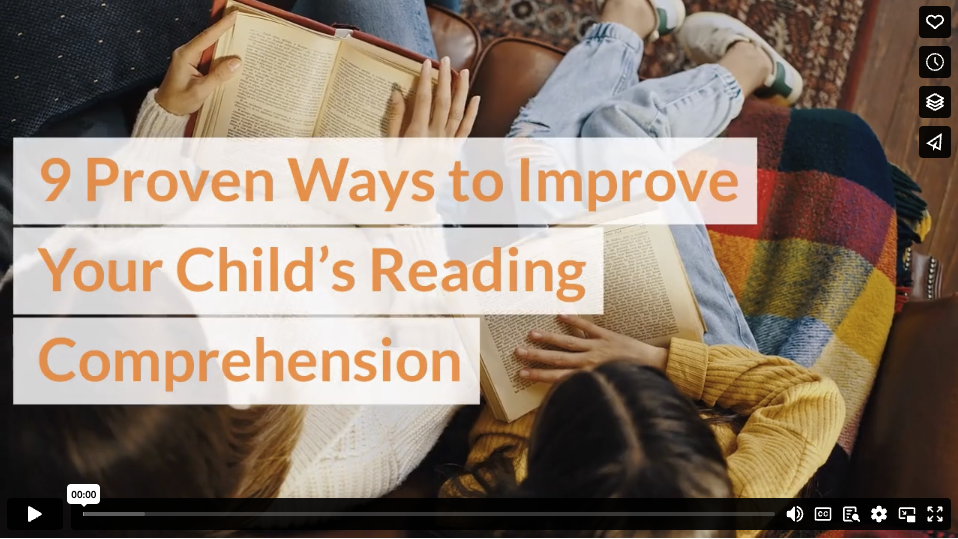Reading is far more than piecing letters and sounds together. In order for a child to excel at this critical life skill, reading comprehension is a must. Children who master the art of reading comprehension are able to understand the meaning and context behind the words on a page, as well as make connections and predictions about what might happen next. In addition, children should be able to retell and summarize what they have read to ensure the information is retained.
At our private school in Atlanta, our faculty has chosen to make reading comprehension a top priority within the classroom. However, a successful and effective mastery of reading comprehension skills requires a team effort between teachers and parents. If you’re wondering how you can intentionally foster better reading comprehension in your child, read on for nine proven tips and tricks.
1. Choose Level-Appropriate Reading Materials
It’s important to keep reading materials at an age-appropriate level. Many “learn-to-read” books feature numbered levels to help you choose the right books for your child. An age-appropriate book is one where the child can recognize close to 90% of the words on their own. Anything more difficult will pull a child out of what they’re reading, making it difficult to draw on meaning and context. If you’re unsure what reading level your child should be working on, ask their teacher.
2. Have Your Child Read Aloud
Although it can be tempting for children to speed through a book or read it in their heads, reading out loud helps them slow down. Slowed reading allows for better comprehension, as children are better able to process the material.
3. Read and Reread
While reading aloud to slow down is important, you want to ensure the reading isn’t too slow. In order to achieve fluency, children should read the same material in repetition. Rereading is a critical step to reading with ease and understanding. Children should be able to read 90 words per minute by the time they enter third grade. With repetition, students learn to recognize words faster and more accurately. This helps boost comprehension.
4. Discuss What They’ve Read
Talk with your child about the material they’re reading. “Verbal processing” allows your child to make connections, consider context, and explore meaning and themes. Ask your child questions about the book before, during, and after reading. Questions might include:
- “Based on the title and cover art, what do you think this book will be about?”
- “Why do you think the character made that choice?”
- “What do you think will happen next?”
- “Can you tell me the story in your own words?”
- “Does this story remind you of any other stories?”
- “What do you think is the moral of this story?”
5. Read to Your Child
Take turns reading out loud. When it’s your turn, have your child sit beside you and follow along with your finger as you read. Hearing the words aloud and being able to follow along helps children connect the sounds with meaning.
6. Let Them Tell a Story
Encourage your child to tell their own story, or provide them with a blank book that they can turn into a tale of their own. Have them choose characters, a problem that needs to be solved, a plot, and even a plot twist. Help them choose a moral for their story, then write it with level-appropriate words.
7. Broaden Their Vocabulary
Effective reading comprehension requires an ever-growing vocabulary. Try having a “word of the day,” and see how many times your child can use their new word that day. Use conversations and books to introduce unfamiliar words, and always discuss the meaning and context.
8. Encourage Critical Thinking
Asking thought-provoking questions–both about books and the world around them–is a great way to help children evaluate and analyze what they’ve observed. Help them connect what they’ve read to their own personal experiences and think about things from different perspectives.
9. Speak With Their Teacher
Your child’s teacher knows your child’s strengths and struggles when it comes to reading comprehension. If you’re unsure where to start or what would most benefit your child, schedule a meeting with the teacher. The stronger the partnership between the home and classroom, the higher the success rate.
In addition, ask your teacher about the topics being taught in the classroom each week, and visit your local library for books that correspond. For example, if the class is learning about bats, your library will offer a variety of fun reading materials. Having pre-existing knowledge on the topic will help your child recognize words more easily and encourage deeper comprehension.
Parents who practice intentionality in fostering reading comprehension at home give their children the tools they need for a successful education. Remember, critical skills like reading comprehension don’t come overnight. They’re developed through patience and consistency. But by putting these strategies into practice, you’ll be surprised at how rapidly your child’s love for reading will grow.
Video

Infographic
Reading is more than just putting letters and sounds together. For a child to excel, reading comprehension is vital. Discover proven tips and tricks in the infographic to help improve your child’s reading comprehension.

